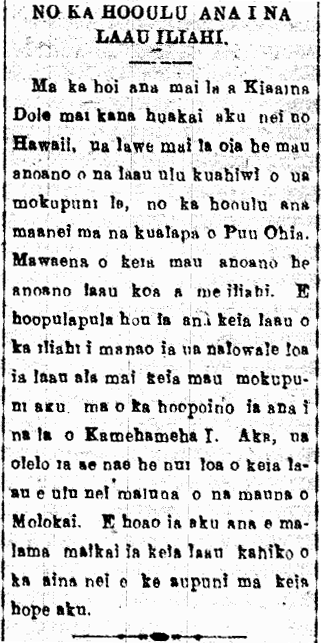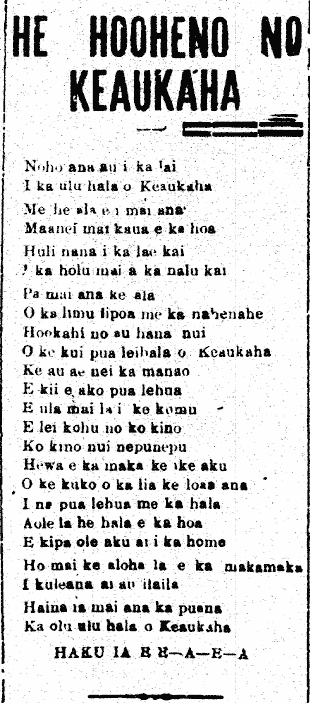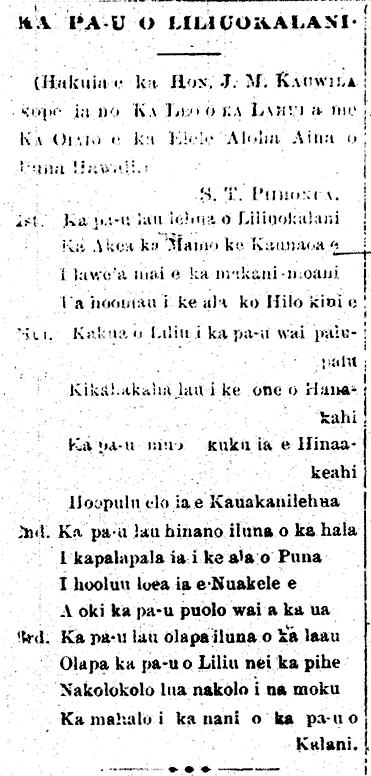SLED OF A CHIEFESS
On the 6th of last month, N. K. Pukui, traveling agent of the Hawaiian Realty and Maturity Co., while on a tour of the Island of Hawaii, found the above illustrated sled in a cave at Hookena, Hawaii.
It is said that the oldest kamaainas of Hookena have heard from their parents and grandparents that sometime in the reign of King Keawenuiaumi, about two hundred and fifty years ago, a high chiefess named Kaneamuna [Kaneamama] was the living at Hookena. Her principal amusement was hee holua (coasting on a sled) and hee nalu (surfing).
She had her people make a sliding ground for her on a hill just back of the little village of Hookena, and ordered a sled, or land toboggan, called a papa holua, as well as a surfing board, or a papa hee nalu. When the slide was finished she passed many pleasant hours sliding down the steep hill. This slide was composed of smooth stones covered with rushes. After her death her sled and surf board disappeared, and the secred of their hiding place was never revealed.
It is believed the sled and board found in the cave belonged to the High Chiefess. They are made of the wood of the bread-fruit tree and at the present time are in very good condition. The cocoanut fiber ropes are still attached to the sled.
(Advertiser Photo.)
ANCIENT HAWAIIAN SLED FOUND IN A KONA, HAWAII, CAVE.
[See also the Hawaiian-Language article found in Ka Na’i Aupuni, 12/6/1905, p. 2.]
(Pacific Commercial Advertiser, 12/6/1905, p. 5)

The Pacific Commercial Advertiser, Volume XLII, Number 7279, Page 5. December 6, 1905.









